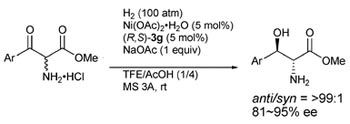Bayer MaterialScience to boost polycarbonate capacity in Europe
Increase of annual capacity of plant in Germany to 400,000 tons
Advertisement
Bayer MaterialScience is to expand production of polycarbonate at its Krefeld-Uerdingen site in Germany through an investment of about EUR 90 million. The plant's current annual capacity is to gradually reach 400,000 tons over the next four years in stepped increases. The current nameplate capacity is 330,000 tons per year.
"Global demand for polycarbonate has increased considerably, with the strongest growth in Asia/Pacific, particularly in China. But there is also increased demand in Europe where the material’s versatility and other properties make it an ideal material for a variety of applications, for example in the automotive industry, where it is used to make vehicles lighter and more energy efficient. For Europe, we expect an average growth of five percent," says Dr. Günter Hilken, head of Polycarbonates at Bayer MaterialScience.
Another reason for the strong growth in Europe is the increasing demand for technology driven products such as in the electronic entertainment industry. One example is state-of-the-art LCD TV screens which must meet requirements for “eco-labels” as well as strict legal requirements with regard to flammability. There is also increasing demand for polycarbonate in other industries such as furniture and medical applications.
"To cope with this increased demand we need a competitive, world-scale manufacturing plant – and this is exactly what we will achieve with the expansion at Uerdingen. We will use state-of-the-art technologies and optimize the whole process. The plant will become less complex, more reliable and considerably more energy efficient," says Dr. Tony Van Osselaer, member of the Executive Board at Bayer MaterialScience.
In addition to the polycarbonate expansion at the site, Bayer MaterialScience is also currently rebuilding chlorine production facilities to increase energy efficiency. The new facilities will utilize state-of-the-art membrane technology and the innovative company’s Oxygen Depolarized Cathode (ODC) technology. Compared with the membrane technology ODC will reduce both electricity use and indirect CO2 emissions up to 30 per cent.
Most read news
Other news from the department manufacturing

Get the chemical industry in your inbox
By submitting this form you agree that LUMITOS AG will send you the newsletter(s) selected above by email. Your data will not be passed on to third parties. Your data will be stored and processed in accordance with our data protection regulations. LUMITOS may contact you by email for the purpose of advertising or market and opinion surveys. You can revoke your consent at any time without giving reasons to LUMITOS AG, Ernst-Augustin-Str. 2, 12489 Berlin, Germany or by e-mail at revoke@lumitos.com with effect for the future. In addition, each email contains a link to unsubscribe from the corresponding newsletter.

































































